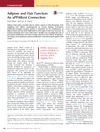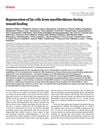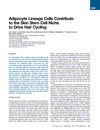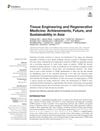Hydrogel from Acellular Porcine Adipose Tissue Accelerates Wound Healing by Inducing Intradermal Adipocyte Regeneration
September 2018
in “
Journal of Investigative Dermatology
”
hydrogel acellular porcine adipose tissue HAPA adipose-derived stem cells ADSCs intradermal adipocytes fibroblast migration wound closure re-epithelialization angiogenesis skin appendages hair follicles sebaceous glands soft tissue augmentation fat cells blood vessel formation oil glands soft tissue repair

TLDR A hydrogel made from pig fat helps wounds heal faster by regenerating skin fat cells.
In a 2019 study, researchers found that a hydrogel made from acellular porcine adipose tissue (HAPA), with or without the addition of adipose-derived stem cells (ADSCs), significantly accelerated wound healing in mice. The study, which involved groups of 5 mice at each time point, showed that HAPA promoted the regeneration of intradermal adipocytes, which are important for skin homeostasis and wound healing. The treatment improved fibroblast migration, wound closure, re-epithelialization, angiogenesis, and even led to the regeneration of skin appendages like hair follicles and sebaceous glands. The study, supported by the National Key R&D Program of China and the Youth Innovation Project of Sichuan Medical Research, concluded that HAPA could be a potential biomaterial for soft tissue augmentation and wound healing, with further studies recommended to confirm these findings.








